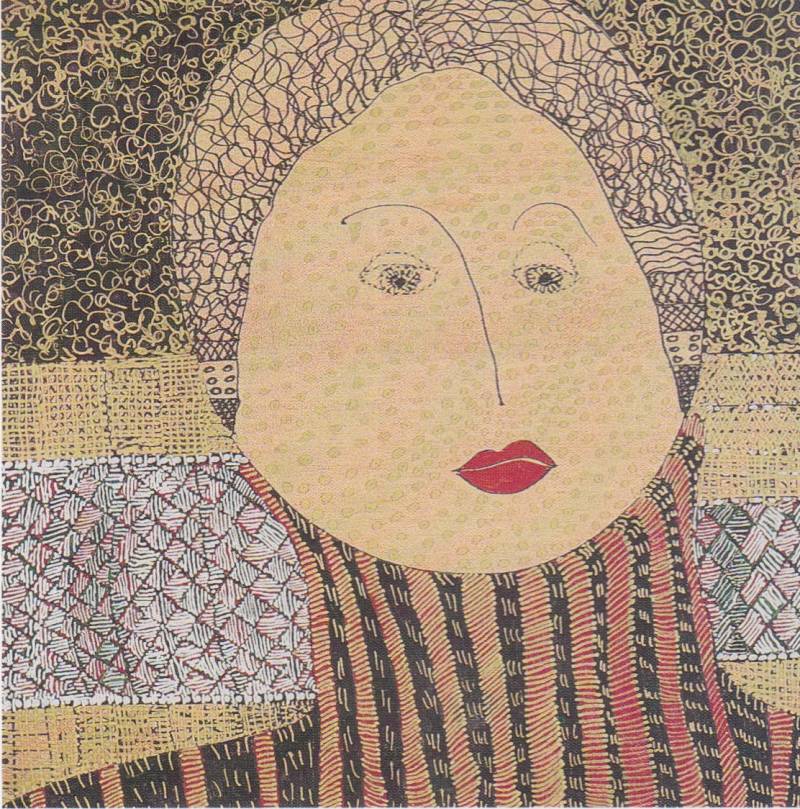
The faces you see are not figments of the imagination; they are real people. The places you see are not invented fantasies; they are real lands. All are images, past and present, contained in the abundant album of experience that shapes the content of Huguette Caland's art. Huguette's first painting, a huge red abstraction executed in 1964, was intented to depict the creeping cancer that had consumed her father's life. It became instead an assertion of survival, a commanding pro-life statement of regeneration and growth. In the years since then, Huguette has moved through a variety of expression and media in her art. She has worked in pencil, ink, crayon and acid; in watercolor, acrylic and oil; in collage and clay; in threads of silk and cotton. She has applied her searching lines and forms to paper, cardboard, canvas and textiles; to wood, metal and stone. She has been alternately abstract or figurative in imagery, alternately linear or color- motivated in compositional emphasis. But always, dominating the manner and medium of expression, has been the content, the innumerable etchings of experience that have marked Huguette's life. She is, in the broadest meaning of the word, a humanist in her art: sensual and erotic, spiritual and nostalgic, humorous and whimsical, fearful and daring, compassionate and detached, pragmatic and impulsive. The Faces and Places exhibited here two years ago were produced in Lebanon. They were abstractions rooted in Huguette's spontaneous responses to post-war Lebanon. Some of them were monumental in size. Rendered in an energetic orchestration of bold color and textured surfaces, all reflected the immediate tenor of Lebanon's character. The faces and Places you see now were produced in California, but the creative sperm belongs to memory. In them, Huguette recalls a long ago past, the enduring lines of faces she knew of herself as a child, of her father and mother, of her children in youth, of dear friends and departed lovers. The places she remembers are the treasured picture postcards of the Lebanon she knew, its images frozen forever in the timeless storehouse of her mind. The intimate size, the soft quality of color on natural wood, the concentrated purity of line and the embroidered passages of considered detail that constitute these works all combine to voice the persistently private essence of Huguette Caland's art.
Helen KHAL,
1997.
On croit pouvoir prendre de la distance en s'éloignant.
Paradoxalement, ce bout du monde qu'est pour nous la Californie est insuffisant pour nous déraciner.
Où qu'on aille sur cette planète, nos racines nous collent à la plante des pieds.
Admettre cela, après une si longue absence et après avoir feint le détachement est difficile, mais relève du choix de rigueur que j'ai toujours fait.
Tout ce qu'on laisse de traces, n'est en somme qu'un témoignage accidenté de temps intensément vécus.
Huguette Caland,
1997.